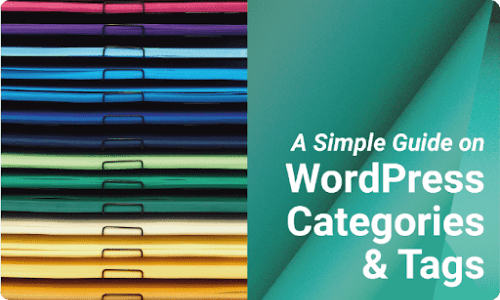WordPress comes with many amazing categories and tags, making it easy to personalize your blog. However, it’s easy for to arise when looking for your best option. Categories make choosing easier, but even then, selecting the right keywords for each category can be challenging. In this guide, we’ll explain everything you need to know about categories and how you can choose the best ones for your blog.
What are Categories and Tags in WordPress?
The best way to understand categories and tags is to use the Category Template feature in WordPress. By default, all posts in a category are classified into one of eight cover story types. The types are based on the post (for example, an announcement post in the Announcement category) and its Hook » Get Info » post type. Each Hook » Get Info has its own description, images, and details that help describe the content within the category. Category templates allow you to create new categories or re-order existing categories quickly.
The main differences between categories and tags
In WordPress, categories and tags are exactly that — categories and tags. They are used to group related content. The difference between categories and tags comes down to how they are used. Category elements include headers, footers, the main menu, images, and select elements (those that begin with an “item” and end with a “child”). Keyword elements include the title, meta description, and keywords. While both categories and tags are crucial for WordPress navigation (and just about everything reliant on search engine optimization), there is a significant difference in terms of functionality between these two elements.
However, if you have an extensive topic that mainly covers different subjects and want to organize the content (e.g., categorizing by topic rather than just writing about it), tags can help. For example, if you’re looking to diversify from general home decor tutorials to “how to make mud flaps,” creating a title for each topic might make sense.
Why use categories and tags?
There are three reasons to use categories and tags in your WordPress theme: to improve the user experience when editing or creating posts, to categorize content and enable a better search experience, to organize content on your website, and to ensure developer data remains organized and allows auto-updates.
How can I add categories or tags?
Adding categories to your WordPress posts is one of the most important aspects when creating blog posts. Depending on the popularity and traffic of your blog, it’s not uncommon to receive emails from search engines announcing the newest post in a specific category. Categories also allow visitors to quickly filter through content on your site, making it easier to find what they are looking for. They also help other bloggers find content that they might not otherwise find because they were looking in the wrong place.
To assign a category, click the categories panel –> post editor.
To create a category, click “add a new category” –> name the category –> click the “add new category” button.
To add a tag, navigate to the tag menu and expand the panel before typing each new tag, separated with commas. You won’t need to repeat this process for every post, as when you next start typing, it will show up as part of a drop-down list.
Note:
For your blog post to show up in the correct category, you should first go to your WordPress admin panel and select the one you want to use from your posts. This is because most WordPress users type the category’s name in the URL itself when creating a new post. However, if you use classes in your post URL, all the posts in that category will appear in the same category index. You can avoid this mistake by creating a separate folder for each category (i.e., Photo Category | Blog).
Some SEO websites use categories in their website URL structure. You can set this up by going to Settings > Permalinks.
Selecting the category could allow visitors from certain countries to see your website more easily, for example. This is useful if you want the website to have a universal appeal but maintain control over adding specific pages for each country or region.
The number of WordPress categories and tags you have should be dependent on how complex your theme is. For example, if you have a very simple site with just a few pages, you probably only need a few general categories. However, if you have many plugins and templates on your site (and likely have lots of custom content), you might need more categories or even branded categories for logo files, filing systems, and the like. This is why having a set number of core categories that you can always fall back on is a perfect idea.
Categories or tags- which is better for SEO purposes?
WordPress has many categories and tags, making it easy to get lost in any one group. That’s why it’s important to know what’s better for SEO. With this in mind, WordPress has categories for different types of content such as blog posts, pages, certain types of files, etc.
When choosing a category for your WordPress site, you should always take a little time to think about what kind of content it is and whether it will be helpful to users. Also, look at the tags to see if they point out relevant words or phrases in your content. This can help ensure you’re placing the right keywords in the right sections for the search engines.
The first and most important place you should optimize your WordPress site is wp_compat.example.com. You don’t need to change anything in the wp-config.php file, aside from selecting a language.
WordPress comes with hundreds of default categories and tags. It is much faster and easier to do SEO using categories than tags.
Some people argue that categories are better for SEO, and some disagree. The main idea behind categories is that they help your readers understand what you’re trying to get at and what topics you cover concisely. However, tags can also be very important for effective SEO.
This question comes down to how closely related (or not) your keywords are to each other. If you have many similar keywords, your tags will most likely be very general and may not be helpful for optimization purposes, especially since there is very little overlap between them.
Wrapping up
Have you been looking for a new way to organize your blog? Why not try using WordPress categories and tags?
The best way to get started with categories and tags is to create a list of topics or keywords that you cover throughout the blog. You can also use these if you want to create a more organized blog by subject but don’t want to use so many visual parts of WordPress, such as the menu system or the widgets that come with it. Some people instead prefer to group related topics under a single category, while others use tags to group related posts.
Want to learn more? Email us at info@engagebranding.com for further queries related to this post.



